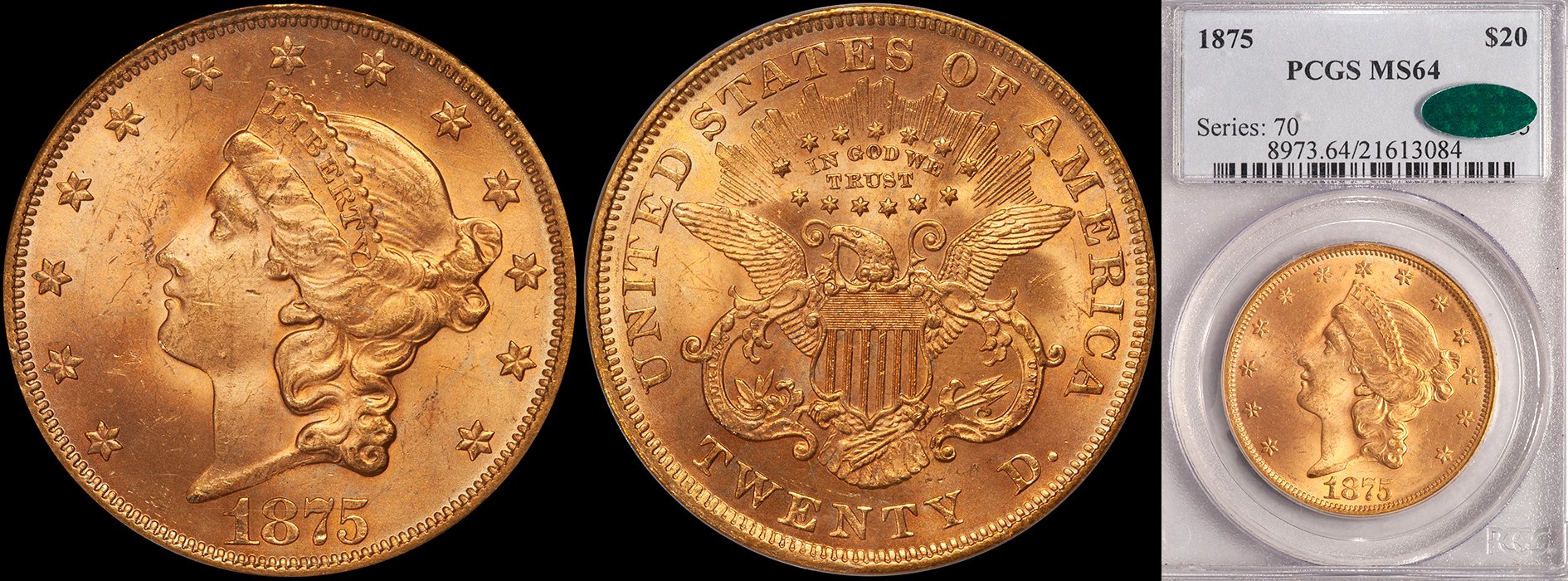"Faux Rarities"
/One of the ways to determine the strength of the rare coin market is to look at the pricing of coins that I like to call “Faux Rarities.” A Faux Rarity is a coin that, despite a high valuation, is relatively common. Three examples of Faux Rarities are 1879 Flowing Hair Stellas, high grade St. Gaudens High Reliefs and Panama-Pacific Exposition Octagonal $50 gold pieces. It is my opinion that once coins like this start decreasing in price, the market is weakening. Despite the fact that it is technically a pattern, the 1879 Flowing Hair Stella is still collected as a regular issue and this has helped to make it a far more valuable item than if it were regarded solely as a pattern.
An estimated 425 examples were produced but I believe this number is too low and does not factor in Restrikes that were produced later. There appear to be at least 400-500 examples known in grades that range from Damaged Very Fine to Superb Gem Proof. Stellas are most often seen in Proof-63 to Proof-65 and it is hard for me to consider them truly rare when they seem to be available in quantity in every major auction; not to mention in the cases of a number of dealers at major shows.
If you purchased a Gem Proof Stella back in 2000 (at the beginning of the current bull market in rare coins) you probably paid $100,000 or so. If you were a bit later to the party (say 2003 or 2004), a similar coin would have cost you around $200,000. Today, the same quality Stella (graded PR66) might cost as much as $300,000. The problem with the PR66 Stella market is that, due to gradeflation, a PR66 now has a combined PCGS/NGC population that is north of fifty coins. A second thing to consider is that most of the Stellas in today’s PR66 holders have been conserved; unlike the Gems back at the beginning of the decade that tended to be original and very attractive.
I regard the St. Gaudens High Relief in MS66 as probably the ultimate Faux Rarity. Yes, this is a beautiful coin and, yes, it is an historic issue. But it appears to me that as much as 90% of the original mintage still exists and most remaining High Reliefs tend to be very choice.
In 2000, I can remember selling MS66 High Reliefs for around $40,000-45,000. By 2004, levels had risen to $70,000. Today, a nice MS66 will cost the collector around $100,000 or possibly a bit more. Considering the fact that PCGS and NGC have a combined population of 180 High Reliefs in MS66 (plus an additional fifty-one in grades higher than this) it is pretty difficult for me to say with a straight face that this is a “rare coin.” It has been brilliantly promoted but I doubt this issue can sustain enough demand to continue to appreciate in price.
Another classic Faux Rarity is the massive 1915-S $50 Panama-Pacific Octagonal. A total of 645 examples were produced and it appears that virtually all of the original mintage still exists. When the gold commemorative series is popular, there is legitimate collector demand for this issue. But gold commemoratives have been as a dead as a doorknob for a number of years so this level of demand tends to be more artificial. This, I believe, is a characteristic of all Faux Rarities.
Despite an apparent lack of specialized collector demand for this issue, it has been well-promoted during the last few years and Octagonals sell easily at coin shows and auctions. An MS65 example is currently valued at around $125,000, which is an impressive gain over the $100,000 or so it was worth a year or two ago. Five to seven years ago, if you could find an MS65 Octagonal (it is only in the last few years that PCGS started grading MS65’s of this design with any regularity; back in the day, virtually all Gem quality examples were graded MS64) it would have set you back $50,000.
As I mentioned above, I think that these Faux Rarities represent a sort of harbinger for the overall state of the high end of the coin market. When these issues begin to free fall in price (which I think is inevitable given how much they have risen in price in five years) this could well be a sign that the market as a whole is ready to begin a correction. Will truly rare coins get dragged down along with these Faux Rarities? I’m not sure. In the past they have but it appears to me that the market has enough depth this time around that perhaps the Drag Down Effect will not be as strong this time around.









